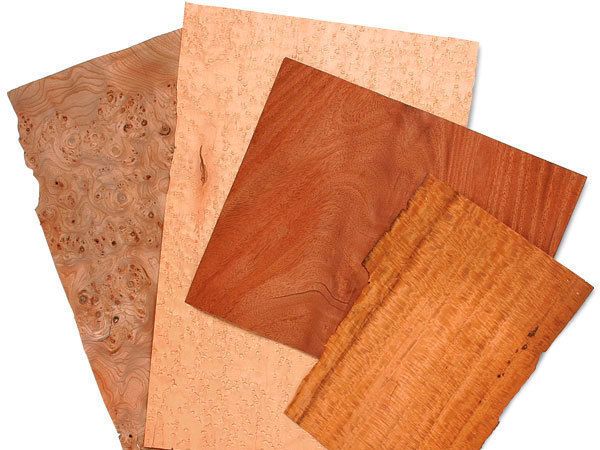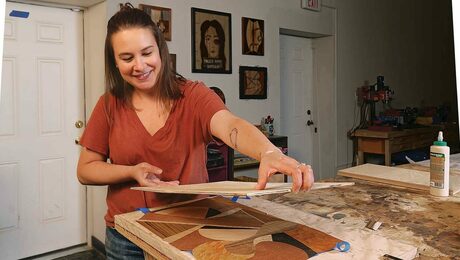All About Veneering and Inlay

From decorative marquetry, to intricate stringing and banding, to highly figured veneered surfaces, there are a number of options for adding ornamentation to furniture.
The basics:
• Veneering to a core: All surface decoration techniques involve affixing thin veneers to a core.
• Choose your technique: Marquetry, parquetry, string, or banding.
Veneering to a core
It wasn’t until the tools were available to resaw solid wood lumber into thin sheets that veneering became a universal technique in furniture making. And you can imagine the progress that followed the mass availability of veneer. Highly figured lumber, which also carried high price tags, could be resawn into many thin sheets and used to decorate inexpensive panels of wood, thereby creating the illusion that expensive materials were used. When glued to a core (either a glued-up panel of secondary wood or modern sheet goods), veneer can make the difference between an ordinary piece of furniture and an exquisite one.
Veneering can be accomplished using a number of techniques. Hammer veneering is a traditional method that involves pressing veneer to a core with hide glue and a veneer hammer. Contemporary techniques require a vacuum bag or pneumatic press and modern adhesives.
Choose your technique
The use of veneer or other materials as ornamentation on the surface of wood is known generally as inlay. However, there are a number of variations on this technique. Inlay can be as simple as a thin line or small dot, or as elaborate as a mosaic of colorful woods.
Marquetryis a type of inlay that involves assembling contrasting wood pieces into scenes, shapes, or geometric patterns. Like puzzle pieces, thin pieces of veneer are delicately assembled and glued to the surface of a core. Parquetry is a variation on this technique used to decorate wood floors.
The technique known as stringing involves decorating the surface of a furniture piece with a thin string of wood, usually of a contrasting color. This ornamentation is traditionally used to highlight the lines on a piece of furniture by following an edge or outlining a panel. Traditionally, a scratch stock is used to scribe a thin recess on a workpiece so that material can be glued into the recess. A laminate trimmer with a guide fence and a fine-tipped blade is a modern alternative to the scratch stock.
Furniture produced in the styles of the William and Mary and Queen Anne periods are classic examples of furniture that incorporate banding as a surface decoration. These bands of wood, carefully laminated into recurring geometric patterns, are glued to the surface of a furniture part, such as a legs, drawer front, or tabletops. Making banding is often more difficult than installing it, which is why many classic patterns, such as checker and herringbone bandings, can be purchased already assembled through online and catalog retailers.
Fine Woodworking Recommended Products

Bahco 6-Inch Card Scraper

Whiteside 9500 Solid Brass Router Inlay Router Bit Set






















Log in or create an account to post a comment.
Sign up Log in